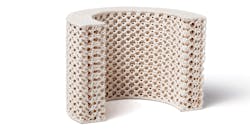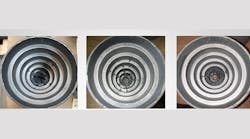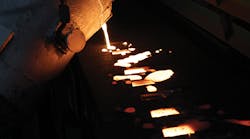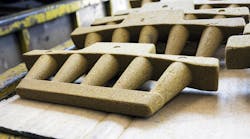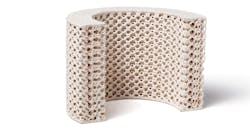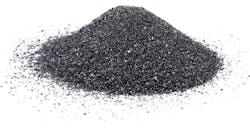Q: We perform magnesium treatment and then inoculate our ductile iron with foundry grade ferro-silicon before pouring it into the mold. We have difficulty improving our nucleation sites with the current practice. Is it possible that there is a way we could improve our nucleation sites, and thereby improve our ductile iron microstructure and mechanical properties?
A: This is a very common occurrence in ductile iron foundries. The usual practice employed for ductile iron is melt in the furnace, get the adequate composition, treat with magnesium, inoculation, and then pour. Sometimes the magnesium treatment and inoculation are done at the same step, depending on the practice and the foundry. In any case, one underrated practice that has been successful with increasing nucleation sites is pre-conditioning.
Pre-conditioning involves adding a specialty alloy before magnesium treatment, in order to have a molten metal that is more susceptible to magnesium treatment and inoculation. We have a product — a preconditioner called VL(Ce)2 — that is ideal for ductile iron practice. At the small addition rates of 0.05-0.1%, the product can increase the nucleation sites for ductile iron, and in turn this will prepare the molten metal for a more effective magnesium treatment. In the end, it will have a positive effect for the final castings.
Q: What is the material composition of this product? How does it differ from other alloys?
A: VL(Ce)2 is a pre-conditioner comprised of silicon, calcium, aluminum, cerium, manganese, zirconium, and iron. All these materials work together to give a strong inoculation to the molten metal, and help to achieve more proficient magnesium treatment. To put it simply, its primary strength is the variation of its constituent elements; Each one brings a certain benefit that will enhance the properties of the final casting.
Q: Can you explain the reason for including cerium, and how it helps in pre-conditioning molten metal?
A: Cerium is an important ingredient of this product. As you may know, maintaining compositional ranges of different elements is essential in ductile iron. Sulfur and oxygen are examples of elements to watch. The magnesium added to the iron will combine with any sulfur present before it begins to change the graphite shape. For this reason, it is important to minimize the sulfur content as much as possible before treatment.
As for oxygen, it will react with magnesium to form magnesium oxides, which may appear as dross. Cerium ties up the sulfur and oxygen, forming cerium oxysulfides. These compounds will provide nuclei for eutectic cell development. Because the cerium reacts with oxygen and sulfur, it will reduce the levels of both elements in the base iron, making the magnesium treatment more efficient.
Lastly, because cerium ties up the oxygen, it also helps to counteract dross formation.
Q: How would I introduce this pre-conditioner to our process?
A: It is preferable to introduce the VL(Ce)2 preconditioner before the magnesium treatment. If it is possible to add the product in stream when tapping the furnace, that would be an ideal practice. For ductile iron, it is always recommended to add this product before the magnesium treatment step, so that it will create the nuclei that will aid the treatment and also tie up oxygen and sulfur content from the base metal.
Q: Our foundry pours gray iron too, and the current inoculant works for both gray and ductile grades. How can we avoid stocking two different products?
A: You will appreciate that VL(Ce)2 is also a potent gray iron inoculant. This means that you are able switch your foundry-grade ferro-silicon inoculant to VL(Ce)2, and use this inoculant for both gray and ductile iron.
In practice, the difference will be that for gray iron VL(Ce)2 will be used in the inoculation step, while for ductile iron it will be used before magnesium treatment. Moreover, the recommended addition rate of VL(Ce)2 in gray iron inoculation is 0.3% by weight. As you recall, the product has a combination of elements that provide a strong inoculation effect.
Join the Conversation. Email Your Questions for ASK Chemicals
Share your insights, opinions, and elaborate on the questions and the experts' answer(s). You must be logged in to the website in order to post your comments.
